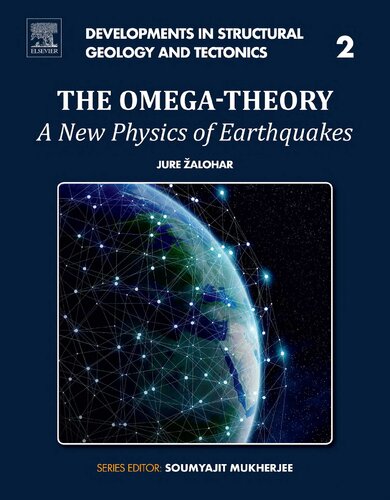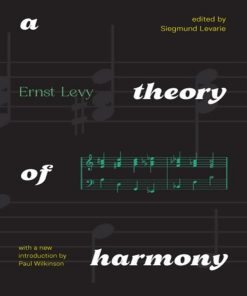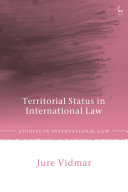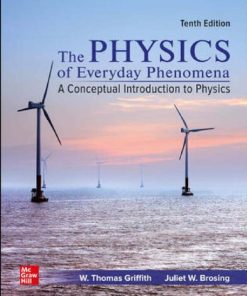(Ebook PDF) The Omega Theory A New Physics of Earthquakes 1st edition by Jure Zalohar 0128145811 9780128145814 full chapters
$50.00 Original price was: $50.00.$25.00Current price is: $25.00.
The Omega Theory : A New Physics of Earthquakes 1st edition by Jure Žalohar – Ebook PDF Instant Download/DeliveryISBN: 0128145811, 9780128145814
Full dowload The Omega Theory : A New Physics of Earthquakes 1st edition after payment.

Product details:
ISBN-10 : 0128145811
ISBN-13 : 9780128145814
Author: Jure Žalohar
The Omega-Theory: A New Physics of Earthquakes, Second Edition offers a unifying, mathematical framework to describe and answer the most pressing and unexamined dilemmas of earthquake sequences. Those in the fields of seismology and geology are currently faced with a vast and complex mathematical structure, involving many new, natural laws and theorems. This book interprets this structure as a new physical theory and paradigm, helping users understand the tectonic and seismic processes within the Earth. As such, it is an essential resource for future researchers in the fields of structural geology, physics of the Earth, and seismology.
The Omega Theory : A New Physics of Earthquakes 1st Table of contents
Chapter 1: Introduction
Abstract
Synchronizations of Seismic Chaos and Predictability of Earthquakes
Acknowledgments
I: Cosserat Continuum Theory of Faulting
Chapter 2: Cosserat Continuum
Abstract
Notation
Kinematics of the Cosserat Continuum
The Method of Virtual Power
Hyperelasticity
J2 Plasticity Model
Chapter 3: The Multiple-Slip Mechanism of Plastic Cosserat Deformation
Abstract
Kinematics of Elastoplastic Cosserat Continuum
Chapter 4: Stress Along the Faults
Abstract
Mohr Representation of Stress
Fault Reactivation in the Cosserat Continuum: Amontons’s Law
Chapter 5: Wedge Faulting: The L2 Kinematics
Abstract
Equation of the Wedge Faulting
The effect of the stress asymmetry and the couple-stresses
Chapter 6: Parallel Fault and Parallel Wedge Interactions: The Gamma-Scheme
Abstract
Three Possible Types of Parallel Fault Interaction
Parallel Wedge Interaction
Stress Permutations and Parallel Wedge Interactions
Chapter 7: Båth’s Law and the Cosserat Extension of the Reid Rebound Model
Abstract
Introduction
Simple Models of Faults
Derivation of Båth’s Law
II: Introduction to the Omega-Theory
Chapter 8: Omega-Sequences
Abstract
Definition of the Omega-Sequences
General Structure of the Omega-Sequences
Constructing the Omega-Sequences
Generalized Equations of the Omega-Sequences (GEOS)
Numerical Tests
Fibonacci Omega-Sequences
Discussion and Conclusions
Chapter 9: Omega-Cells: “Seismic Oscillators”
Abstract
External Structure
Internal Structure: Omega-Configurations
Description of Numerical Tests
Results
Discussion
Chapter 10: Omori’s Law
Abstract
Omori’s Law and the Omega-Sequences
Derivation of Omori’s Law
Can Earthquakes be Predicted?
Chapter 11: Felzer-Brodsky’s Law
Abstract
Derivation of the Felzer-Brodsky Law
Discussion
Chapter 12: Strain Waves and Conservation Laws
Abstract
Two Bi-Magnitude Signals and the Omega-Cells
The Kobayashi Equation
Strain Waves: Velocities of the Seismic Migration
Conservation Laws
The Meaning of the Static Stress Drop
Discussion: Dynamic Versus Kinematic Approaches
Chapter 13: Phase Transitions
Abstract
Earth’s Crust as a Two-Phases Cosserat Material
Velocity Transference
Vikulin’s Scaling Equations: Type 1 Magnitude Shift
Vikulin’s Conservation Law
Scaling Laws for the Recurrence Time
Type 2 Magnitude Shift
Discussion and Conclusions
Chapter 14: Gutenberg-Richter’s Law
Abstract
Derivation of Gutenberg-Richter’s Law
Discussion
Chapter 15: What Causes Earthquakes?
Abstract
The General Mechanism of Earthquakes (GME)
Seismic Generalization of Amontons’s Law
Why Is the B2-Magnitude Signal Not Seismic?
A Link to the LEFM
III: Systems, Plate Tectonics, and Order
Chapter 16: Omega-Interactions
Abstract
Clustering of Seismic Events
Binding of Omega-Sequences
Entanglement of Omega-Sequences
Self-Similarity and the Multifractal Nature of Omega-Sequences
Disturbances
Transitions
Discussion
The Omega-Cycle
What Is Entangled?
Chapter 17: Critical Behavior: Large Earthquakes Can Be Predicted
Abstract
Subcritical, Critical, and Supercritical Behavior
Critical Behavior: The Kraljevo (2010) Case Study
Predictability of the Large Earthquakes
Predicting the Kraljevo (2010) Earthquake
Discussion
Chapter 18: Supercritical Behavior: Aftershock Sequences
Abstract
The First and the Second-Order Omega-Sequences
Discussion
Chapter 19: The B-Spectral Theorem and the Synchronized Earth
Abstract
The B-Spectral Theorem
The Synchronized Earth
The Full Form of the B-Spectral Theorem
Chapter 20: Quantum Numbers of Earthquakes: Seismic Back Action and Reverse Causality
Abstract
The B-Spectral Theorem
Ideal Omega-Sequences
Generalization of the B-Spectral Theorem
Extrapolation of the Omega-Sequences: The Echo Earthquakes
The Seismic Echo: What Do Two Large Earthquakes Define?
Seismic Back Action and Reverse Causality: The Nepal (2015) Case Study
Omega-Limitation Law: The Final Development of the Omega-Sequences
The Twinning Effect
2B-Spectrum and the Extended B-Spectrum
Discussion
Chapter 21: Seismic Induction and the Theory of Plate Tectonics
Abstract
The Problem: Introduction
The Theory of Plate Tectonics and the Cosserat Continuum
Why Should Tectonic Plates Interact Each With Other?
Forces of Interaction
Discussion and Conclusions
Chapter 22: Earthquakes as Computation: Origin of Order
Abstract
Test 1: Slovenia Region
Test 2: Northern Italy Region
Test 3: Brežice Earthquake 2015
Origin of Order
Origin of Synchronizations
Conclusions: Earthquakes as Computation
IV: Seismic Chaos Synchronizations
Introduction
Introduction
Chapter 23: T-Synchronizations: Predicting Future Seismic States of the Earth
Abstract
The Synchronization Equation
The Omega-Interactions: Binding, Entanglement, and Synchronization Function
Predicting the Future Seismic States of the Earth
The Nepal (2015) Experiment
Chapter 24: M-Synchronizations: The B-Megasignal and Large Earthquakes
Abstract
The Magnitude-Synchronization Function
B-Megasignal: The PAPUA New Guinea Case Study
The Southern California Case Study
Chapter 25: S-Synchronizations: The Reciprocity Theorem and the Failure Localization Law
Abstract
Phenomenological Observations
The Reciprocity Theorem
The B-Spectral Theorem and the MARS Structure
Seismic Activity of the MARS
The Failure Localization Law
Verifying the Failure Localization Law
Confirmation of the Third Conservation Law
Chapter 26: Maximum Effectiveness of Predictions: − 1 Rule
Abstract
Case Study: Northern Italy Region
Conclusions
Chapter 27: Open Systems
Abstract
Mathematical Formalism
Test 1: Central Italy
Test 2: Slovenia-Northern Croatia
Conclusions
Chapter 28: Further Observations on S-Synchronizations
Abstract
Visualizing Spatial Interactions Between the Earthquakes
Test 1: Distribution of Nonsynchronized Earthquakes
Test 2: Distribution of Synchronized Earthquakes
Test 3: Region of Slovenia
Test 4: Analysis of the Žužemberk Region
Conclusions
V: Strain Waves, Plate Tectonics, and the Loop Theorem
Chapter 29: Description of Seismic States
Abstract
Superimposed and Product Seismic States
T-Synchronizations
M-Synchronizations
Seismic Computing
Testing the LE-Rule
Conclusions
Chapter 30: Epicenter Prediction: Turbal’s Principle
Abstract
Strain Waves for the Individual Omega-Sequences
The Mechanism of Epicenters: Turbal’s Principle
Global Predictions of Large Earthquakes
Analysis of the Global Strain Waves
Conclusions
Chapter 31: Structure of the Aftershock Sequences
Abstract
Introduction
Strain Waves as the Cause of the Round-the-World Seismic Echo
Sumatra-Andaman Earthquake, 26/12/2004
Tohoku Earthquake, 11/03/2011
Relationship Between the Foreshocks and Aftershocks
Conclusions
Chapter 32: Synchronizations and Fault Reactivations
Abstract
Introduction
Ravne Fault, Slovenia
North Anatolian Fault
Conclusions
Chapter 33: Predictability of Volcanic Eruptions
Abstract
1980 Mount St. Helens Eruption
2004 Mount St. Helens Eruption
2011 Mount St. Helens Increased Seismic Activity
Conclusions
Chapter 34: Strain Waves at the Tectonic Plates Boundaries
Abstract
The California Region
The Japan Region
Mid-Atlantic Ridge System
Arabian Sea and Gulf of Aden
Conclusions
Chapter 35: Origin of Plate Tectonics: The Loop Theorem
Abstract
Introduction to the Loop Theorem
Fault Patterns and Earthquake Interaction Patterns
The Loop Theorem
Tilings and Tiles
Properties of the Penrose Tiling
Earthquake Interaction Patterns
People also search for The Omega Theory : A New Physics of Earthquakes 1st:
the alpha and the omega theory
the omega point theory
what is the omega society
omega set theory
omega function number theory
You may also like…
Jurisprudence & Law
The Protection of Foreign Investment in Times of Armed Conflict 1st edition Jure Zrilic
Physics Physics - Quantum Physics
Romance - Erotic Romance
House of Omega: A Reverse Harem Omegaverse (Pack’s Companion)
Romance - Historical Romance
The Betas Bargain The Omega Accords The Omega Accords Book 3 1st Edition by Tea Ravine B0CVFR2XSX
Romance - Other Romance Categories












